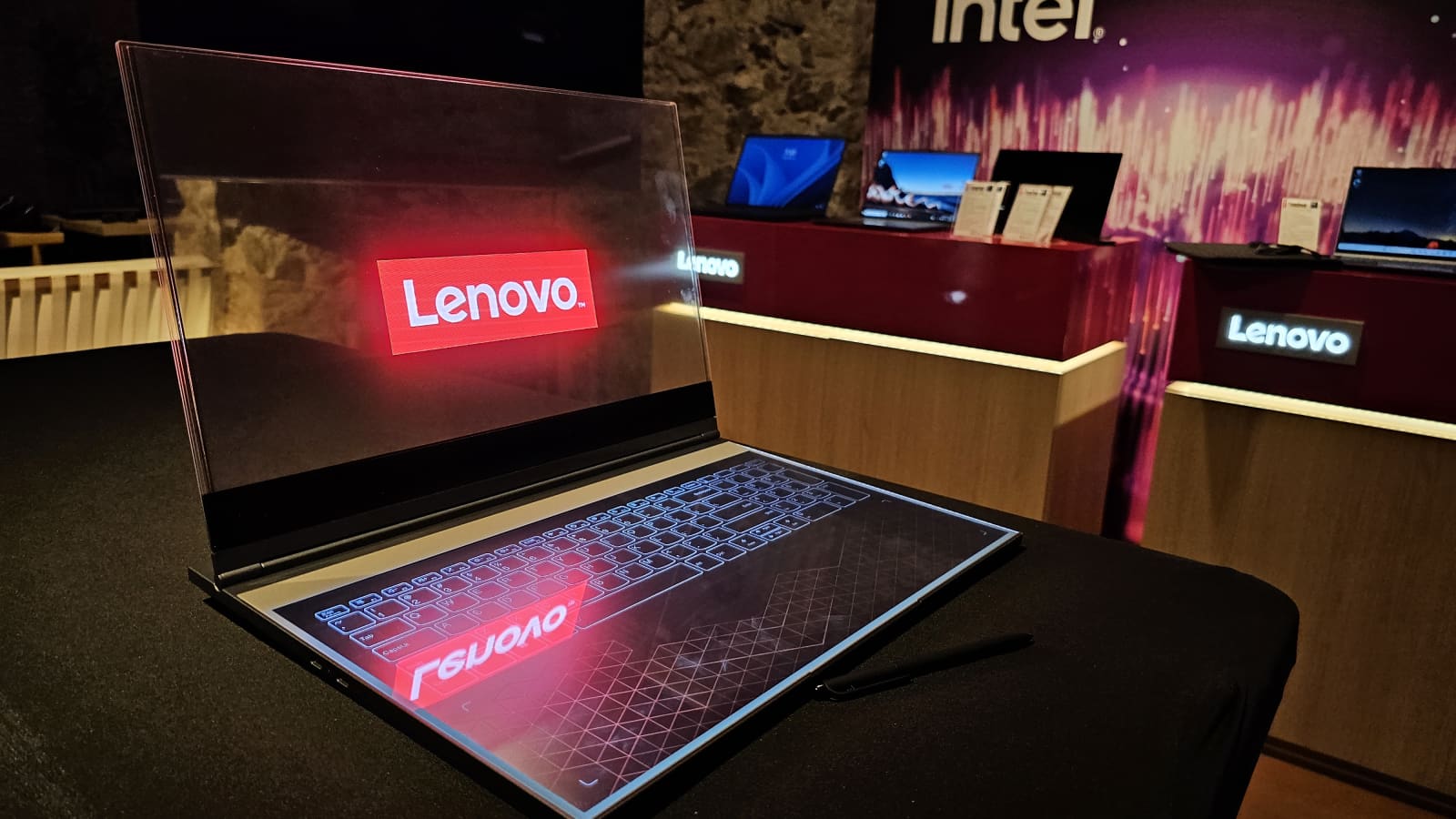At the Mobile World Congress, Lenovo revealed an intriguing ThinkBook Transparent Display Laptop concept.
This cutting-edge gadget has a 17.3-inch transparent MicroLED display. When the display is off, people may see through it thanks to its up to 55% transparency. When illuminated, it reaches a peak brightness of 1000 nits and becomes entirely opaque, but it also creates opportunities for novel user experiences.
Beyond the Wow Amount: Possible Uses and Functionalities of Lenovo
There’s more to this translucent display than meets the eye. Lenovo anticipates possibilities for artists working with digital media who can see beyond their screen while sketching.
Paired with AI object identification, it could be possible to superimpose digital data or images—akin to augmented reality experiences—on top of tangible objects.
Read also: TechMarkit launches Innovative laptop library programme
The idea also incorporates a novel touch keyboard that may be used as a drawing pad. When a pen gets close, the keyboard projection vanishes, making it easy to transition between typing and sketching operations.
A Look Into the Future, But Not Quite Ready for Prime Time: The ThinkBook Transparent Display Laptop is a concept that will never be made commercially available but shows potential. Within the next five years, Lenovo hopes to incorporate these technologies onto actual laptops to improve user experience and cooperation.
Nevertheless, there are issues with the existing prototype. There are issues with the 720p resolution and the touch keyboard’s lack of haptic feedback. Lenovo is hard at work coming up with solutions, such as using AI to increase typing accuracy according to user preferences.
Beyond Lenovo: Examining the Wider Field: It’s important to remember that other companies are also investigating transparent displays. Their commitment to this technology is further demonstrated by their “Lenovo Crystal” concept, which is akin to the ThinkBook but has an OLED display.
Obstacles and the Path Ahead
Fully transparent displays have practical challenges despite their apparent advantages. Solving battery constraints, privacy problems, and visibility in bright situations is necessary. Furthermore, there are concerns regarding the extensive use of these displays in consumer electronics due to their price and longevity.
In the future, shop displays, augmented reality, and specialised workspaces may all find uses for transparent display technologies. However, before they are widely used as a feature in consumer products, significant breakthroughs are required to overcome the present obstacles.




